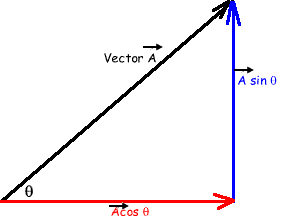
- SEPARATE VECTOR INTO COMPONENTS PARAVIEW UPDATE
- SEPARATE VECTOR INTO COMPONENTS PARAVIEW REGISTRATION
ParaView has two filters that give a user access to python math functions as well as the underlying VTK library. 4.1 Documentation(from an e-mail from Utkarsh).Now seems all clear to me and appreciated very much all the insightful discussions. Realised my misunderstanding was sourced to misinterpret RAS and LPS (had the opposite in mind).Apparently this fig shown in Paraview can not tell anything about RAS and LPS (another mistake I made).

Blue color should be the Thresholding of mhd image saved from Slicer indeed in LPS (as it is rotated to the stl in RAS). I made a mistake in the text description: white gray color should be the stl generated from Slicer which indeed is in RAS as the stl header says - a remind from (Thanks!).
SEPARATE VECTOR INTO COMPONENTS PARAVIEW UPDATE
Blue shows the stl surface generated from Slicer and open in Paraview (in RAS - make sense as this is generated in Slicer with RAS)ĭid I misunderstand something during the process? Thanks!Īfter more insightful info from in a later post, need to update regarding this figure description:.White gray shows the image exported from Slicer in mhd format (in LPS) and open in Paraview, then Thresholding to show the head geometry.

This stl surface when export from Slicer and import to Paraview, I could see it is in RAS.įollowing image shows what I described above My ultimate goal is to use the disp field to displace node coordinate of stl surface generated from Slicer. But my strategy is always to convert the image to RAI in Slicer (to get a TransformMatrix = Identity matrix), in this way, I would verify in Paraview that Slicer indeed export image file back to LPS. Thanks for the remind regarding Paraview. But what about when save it from Slicer? Will Slicer do as for an image file to convert LPS to RAS first, then convert to LPS when save? Or simply save to RAS without any converting? (then if indeed RAS without converting, my confusion is still according to my test, it seems Slicer saved Displacement Vector in LPS). As Slicer uses RAS, I assume this Displacement vector should be in RAS. not by reading any external but generated by Slicer internally).
SEPARATE VECTOR INTO COMPONENTS PARAVIEW REGISTRATION
The Vector volume I am interested in is a dense Displacement vector obtained by nonlinear registration in Slicer (i.e. Thank you very much for the explanation, but I am not sure if I understand correctly. Until this is implemented, you need to manually convert from RAS to LPS before you save a displacement field volume to file that you intend to use as transform. We should probably distinguish between different kind of vector components in Slicer (color, spatial, etc.) and convert RASLPS automatically during file read/write if vectors store spatial information. If you load this volume as a transform in Slicer or in most other software, they will all assume that the vectors are in LPS, so the displacement field will be incorrect. If you export a transform to a vector volume in Transforms module then vectors will contain displacements in RAS coordinate system and since there is no conversion during read/write to file, if you save this volume, then the resulting file will contain displacement vectors in RAS.

in their voxels and they are read/written to file without any modification. Vector volumes can store color, displacements, etc. Since Slicer uses RAS internally, there is an automatic conversion between RASLPS when reading/writing a transform file. Then would be really appreciated if Andras could please explain the difference? Thank you very much. But according to the link, Displacement field used Coordinate System LPS.Īccording to my test, seems Slicer output displacement field is indeed with LPS coordinate system, consistent with the link said. Hi! I am a bit confused Andras says following “ Displacement vector elements are defined in RAS coordinates in Slicer …”. We should probably change Slicer to somehow know that vector components should be converted to LPS for displacement field images, but for now you can do this yourself by inverting the sign of the first two components of the displacement vector that you have read using nrrdread. Image geometry is stored in LPS by most medical imaging software, that’s why we follow this convention, too. Displacement vector elements are defined in RAS coordinates in Slicer and when we save a vector volume from Slicer, we do not alter the stored vector components (we don’t know if the vector components correspond to color, spatial coordinates, etc.). What may be confusing is that Slicer stores elements in RAS coordinates, while the geometry of image saved to file is specified in LPS.


 0 kommentar(er)
0 kommentar(er)
